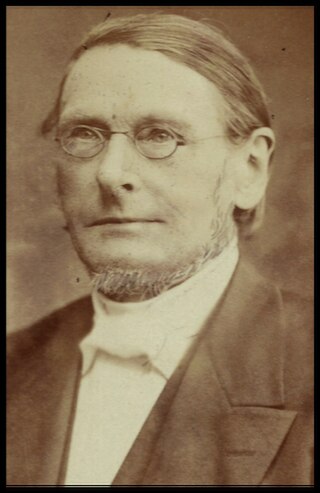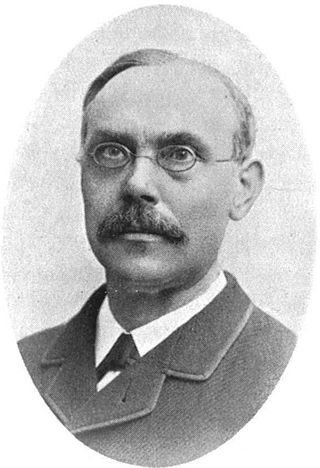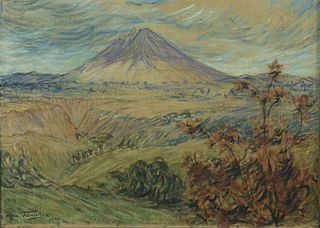Related Research Articles

Johann Müller was a Swiss botanist who was a specialist in lichens. He published under the name Johannes Müller Argoviensis to distinguish himself from other naturalists with similar names.

William Starling Sullivant was an early American botanist recognized as the foremost authority on bryophytes in the United States.

Paul Kummer was a minister, teacher, and scientist in Zerbst, Germany, known chiefly for his contribution to mycological nomenclature. Earlier classification of agarics by pioneering fungal taxonomist Elias Magnus Fries designated only a very small number of genera, with most species falling into Agaricus. These few genera were divided into many tribus. In his 1871 work, Der Führer in die Pilzkunde, Kummer raised the majority of Fries "tribus" to the status of genus, thereby establishing many of the generic names for agarics that are in use to this day. In 1874 he issued the work Der Führer in die Flechtenkunde with numbered lichen specimens arranged in two plates like an exsiccata.

Alexander Carl Heinrich Braun was a German botanist from Regensburg, Bavaria. His research centered on the morphology of plants and was a very influential teacher who worked as a professor of botany at the universities of Freiburg, Giessen, and Berlin at various times. He was also the director of the Berlin Botanical Garden.
Camillo Karl Schneider was a German botanist and landscape architect. A farmer's son, he was born at Gröppendorf, in the Kingdom of Saxony, and worked as a gardener at Zeitz, Dresden, Berlin and Greifswald. Returning to Berlin to work in the City Parks Department, he assisted in editorial work for the periodical Gartenwelt, which led to his employ as a landscape assistant in Darmstadt and Berlin. In 1900, he moved to Vienna, where he practiced as a freelance architect and writer, travelling extensively through Europe. In 1904 he published his first books, including the beginning of his tome Illustrated Handbook of Broad-leaved Trees, which he completed in 1912. However, the manuscript of what should have been his magnum opus, a study of the genus Berberis, was destroyed in a bombing raid on Berlin in 1943. In 1907 he created the specimen series Plantae hungaricae 1907 distributed as an exsiccata-like series.

Gustav Kunze was a German professor of zoology, an entomologist and botanist with an interest mainly in ferns and orchids.

Sven Berggren was a Swedish botanist, explorer and university professor. He was a professor at Lund University 1883–1902, later at Uppsala University. He was elected a member of the Royal Swedish Academy of Sciences in 1880.

Carl Moritz Gottsche was a German physician and bryologist born in Altona. He was the father of geologist Carl Christian Gottsche (1859-1909).

Gottlob Ludwig Rabenhorst was a German botanist and mycologist.
Jonathan CarlZenker was a German naturalist born in Sundremda, located in the Saalfeld-Rudolstadt district. The standard author abbreviation Zenker is used to indicate this person as the author when citing a botanical name.

Heinrich Gustav Flörke was a German botanist and lichenologist. The standard author abbreviation Flörke is used to indicate this person as the author when citing a botanical name.

Ernst Stizenberger was a German physician and lichenologist.
Otto Christian Blandow was a German apothecary and botanist, specializing in the field of bryology.

Richard Paul Max Fleischer was a German painter and bryologist. As a botanist, he is remembered for his work with Javan mosses.
Victor Félix Schiffner was an Austrian bryologist specializing in the study of hepatics.
Carl Friedrich Warnstorf was a German educator and bryologist specializing in Sphagnum studies.
Caro Benigno Massalongo was an Italian botanist who specialized in the field of liverworts. He was the son of paleontologist Abramo Bartolommeo Massalongo (1824-1860).
Karl Gottfried Erdmann was a German physician and botanist. He was the father of chemist Otto Linné Erdmann (1804–1869).

John Michael Holzinger was a German-born American bryologist, expert on the bryoflora of Colorado, and third president of the Sullivant Moss Society.

Exsiccata is a work with "published, uniform, numbered set[s] of preserved specimens distributed with printed labels". Typically, exsiccatae are numbered collections of dried herbarium specimens or preserved biological samples published in several duplicate sets with a common theme or title, such as Lichenes Helvetici. Exsiccatae are regarded as scientific contributions of the editor(s) with characteristics from the library world and features from the herbarium world. Exsiccatae works represent a special method of scholarly communication. The text in the printed matters/published booklets is basically a list of labels (schedae) with information on each single numbered exsiccatal unit. Extensions of the concept occur.
References
- ↑ "Girgensohn, Gustav Karl | International Plant Names Index". www.ipni.org. Retrieved 11 April 2021.
- ↑ "Musci frondosi et Hepaticae exsiccatae. Laub- und Lebermoose der russischen Ostsee-Provinzen in getrockneten Exemplaren: IndExs ExsiccataID=1881167999". IndExs – Index of Exsiccatae. Botanische Staatssammlung München. Retrieved 2 August 2024.
- ↑ International Plant Names Index. Girg.